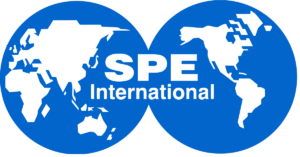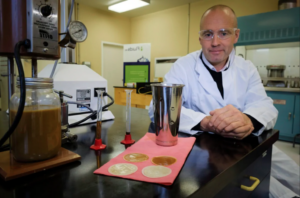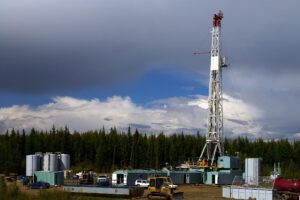Abstract
The success of drilling operations is heavily dependent on the drilling fluid. Drilling fluids cool down and lubricate the drill bit, remove cuttings, prevent formation damage, suspend cuttings and also cake off the permeable formation, thus retarding the passage of fluid into the formation. Typical micro or macro sized loss circulation materials (LCM) show limited success, especially in formations dominated by micropores, due to their relatively large sizes.
In the current work, a new class of nanoparticle (NP) loss circulation materials has been developed. Two different approaches of NP formation and addition to oil-based drilling fluid have been tested. All NPs were prepared in-house either within the oil-based drilling fluid (in-situ), or within an aqueous phase (ex-situ), which was eventually blended with the drilling fluid. Under low pressure low temperature API standard test, more than 70% reduction in fluid loss was achieved in the presence of NPs compared to only 9% reduction in the presence of typical LCMs. The filter cake developed during the NP-based drilling fluid filtration was thin, which implies high potential for reducing the differential pressure sticking problem and formation damage while drilling. Moreover, at the level of NPs added, there was no material impact on drilling fluid viscosity and the fluid maintained its stability for more than 6 weeks.
Introduction
The cost of the drilling fluid loss often represents one of the single peak capital expenditure during drilling. Current experience, nevertheless, shows that it is often impossible to reduce fluid loss successfully with micro and macro type fluid loss additives due to the fact that their physio-chemical and mechanical characteristics still falls short of the best that can be conceived. This impacts the economy of drilling since it increases the non-productive drilling time (Fraser et al., 2003; Amanullah et al., 2011; Chenevert and Sharma, 2009).
LCM with diameters in the range of 0.1-100 µm may play an important role when the cause of fluid loss occurs in 0.1 µm-1 mm porous formation. In practice, however, the size of pore opening in shales that may cause fluid loss varies in the range of 10 nm-0.1 µm, where NPs as a loss circulation material could fulfill the specific requirements by virtue of their size domain, hydrodynamic properties and interaction potential with the formation (Abdo and Haneef, 2010; Amanullah et al., 2011; Srivatsa, 2010). NPs are defined as particulate dispersions or solid particles with a size in the range of 1-100 nm. Amanullah and Al-Tahini (2009) defined nano fluids as any fluids (drilling fluids, drill-in-fluids, etc) used in the exploitation of oil and gas that contain at least one additive with particle size in the range of 1-100 nm. These particles are smaller than micro particles, have a high surface to volume ratio and may provide superior fluid properties at low concentrations of the additives (Amanullah and Al-abdullatif, 2010). The main application of NPs would be to control the spurt and fluid loss into the formation and hence control formation damage. The presence of NPs can lead to better sealing at an earlier stage of filter cake formation and, subsequently, a thinner impermeable mud-cake. Due to its high surface to volume ratio the particles in the mud cake matrix can easily be removed by traditional cleaning systems during completion stages. Thus, the NPs can be used as rheology modifiers, fluid loss additives and shale inhibitors at low concentrations (Amanullah et al., 2011; Amanullah and Al-abdullatif, 2010; Zakaria et al., 2011) without the fear of particles lingering in the drilled well.


















